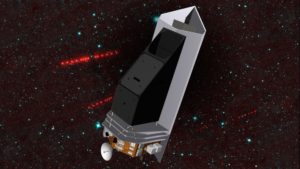WASHINGTON — NASA’s small but high-profile planetary defense software has overcome disruptions caused by the pandemic to continue looking for near Earth objects.
The outbreak, which closed observatories in other nations and the USA, however, slowed for a time those attempts.
“We did see a number of observatories that needed to shut, either on their own or as their host organizations or host observatory websites had to shut,” said Kelly Quickly, director of the NEO Observations App, through a June 3″Asteroid Day” webinar hosted by the Association of Space Explorers.
She stated the program reach an”extreme point” in relation to the number of all observatories closed in late March, but since then a few observatories have discovered ways to restart at least rigorous operations with new COVID-19 safety protocols. That is included telescopes and the Catalina Sky Survey in Arizona at Mauna Kea Observatory in Hawaii.
The closures did not alter the number of new NEOs. “It is a concern, but we have been watching the numbers in the Minor Planet Center, what is being obtained there, and involving what is coming in from the NASA attempts and about the globe, we are doing OK,” she said.
Fast said that more than 2,400 NEOs were detected by different search attempts in 2019. Through June of this year, 1,222 was discovered.
That observation effort a part of the NASA’s planetary defense system. However, its attempt to look for any asteroids that might pose an impact risk provides a greater profile to the program. Public opinion surveys have regularly ranked that program as a greater priority among the public than a few of the much larger exploration attempts of NASA.
The program’s budget also funding NASA’s first dedicated planetary defense mission, the Double Asteroid Redirection Test (DART). This spacecraft will fly into the near Earth asteroid Didymos and collide with just a moon orbiting the asteroid in September 2022. Planetary scientists then plan to gauge the change in the moon’s orbit caused by the impact to better understand the effects of this”kinetic impactor” method that could be used to change the orbit of an asteroid threatening to impact Earth.
DART stays on schedule for launch in July 2021 on a Falcon 9 regardless of the pandemic, said Elena Adams, mission systems engineer for DART in the Johns Hopkins University Applied Physics Laboratory, which is managing the mission, throughout the webinar. The spacecraft bus, with its electric propulsion programs lately arrived for testing and integration in the laboratory.
This will set up a spacecraft named NEO Surveyor in the Earth-Sun L-1 Lagrange point which is going to be employed to look for NEOs using detectors and a tiny telescope.
NASA declared in September 2019 the mission, formerly known as NEOCam and also a finalist in a previous round of the agency’s Discovery program of planetary science missions, could proceed as a”led” mission within the planetary defense program. Agency officials said since its principal goal — detect at least 90% of NEOs at least 140 meters in diameter — was first established by Congress in a 2005 NASA authorization bill, it made sense for NEOSM for a mission.
Amy Mainzer, a University of Arizona planetary scientist and research manager for NEOSM, stated in the Asteroid Day webinar that the mission is working to reach a programmatic milestone known as Key Decision Point B in the autumn, following the conclusion of a string of reviews.
“If we’re able to attain the best funding profile,” she stated,”we’d be able to launch in the year 2025.” That profile could require NEOSM but the budget request for 2021 of NASA didn’t spell out a specific funding amount for its mission. That request had only $83.6 million accessible from the defense software for both space missions aside from DART in addition to ground-based searches and other evaluation efforts.
Some of the stresses could have eased around the program caused while observatories closed. Fast noted that NASA and others have conducted exercises previously about how they’d react to an approaching asteroid. Those exercises did not incorporate the possibility of observatories ” she said. “We have never styled our disasters.”
– Advertisement –
